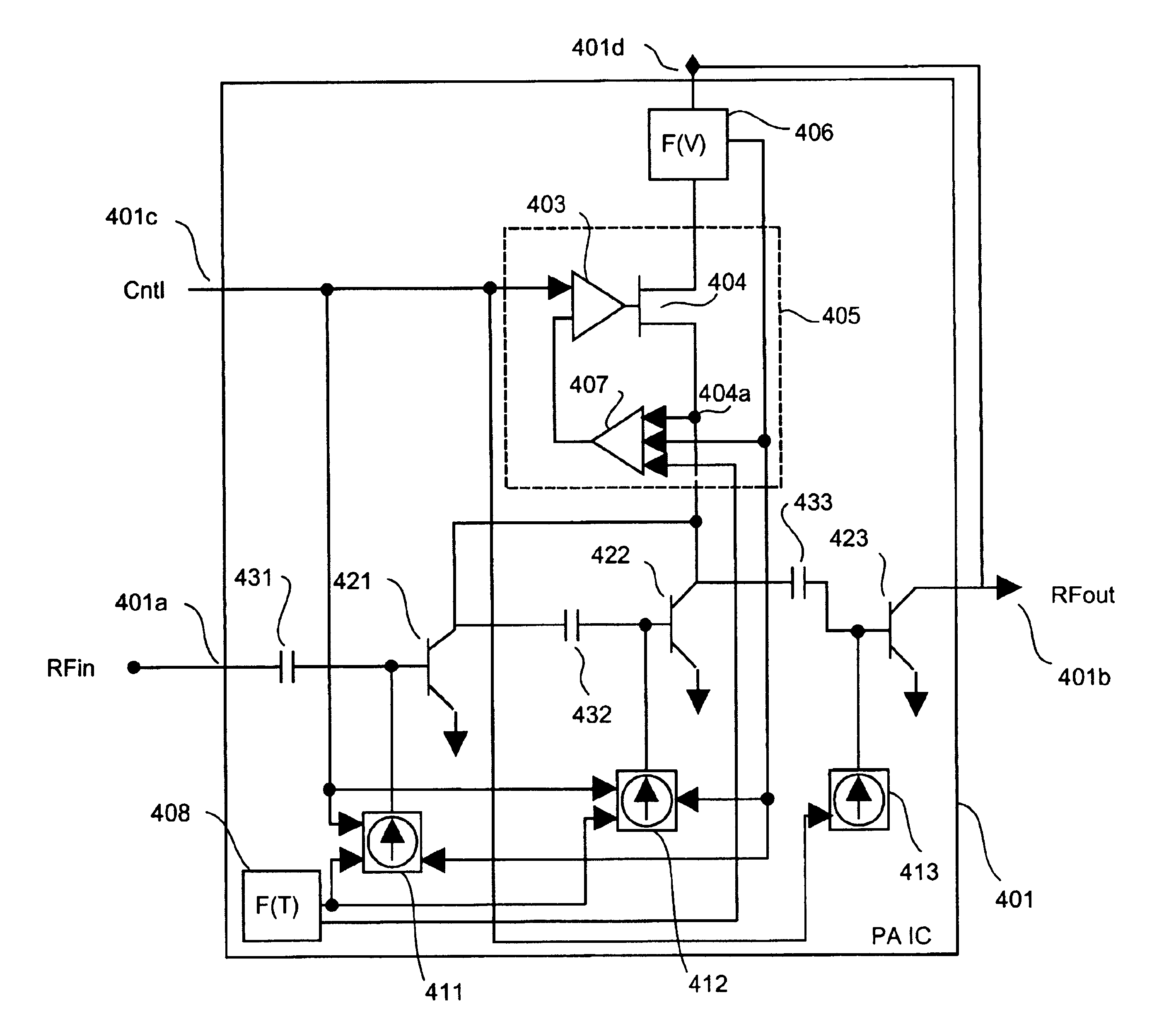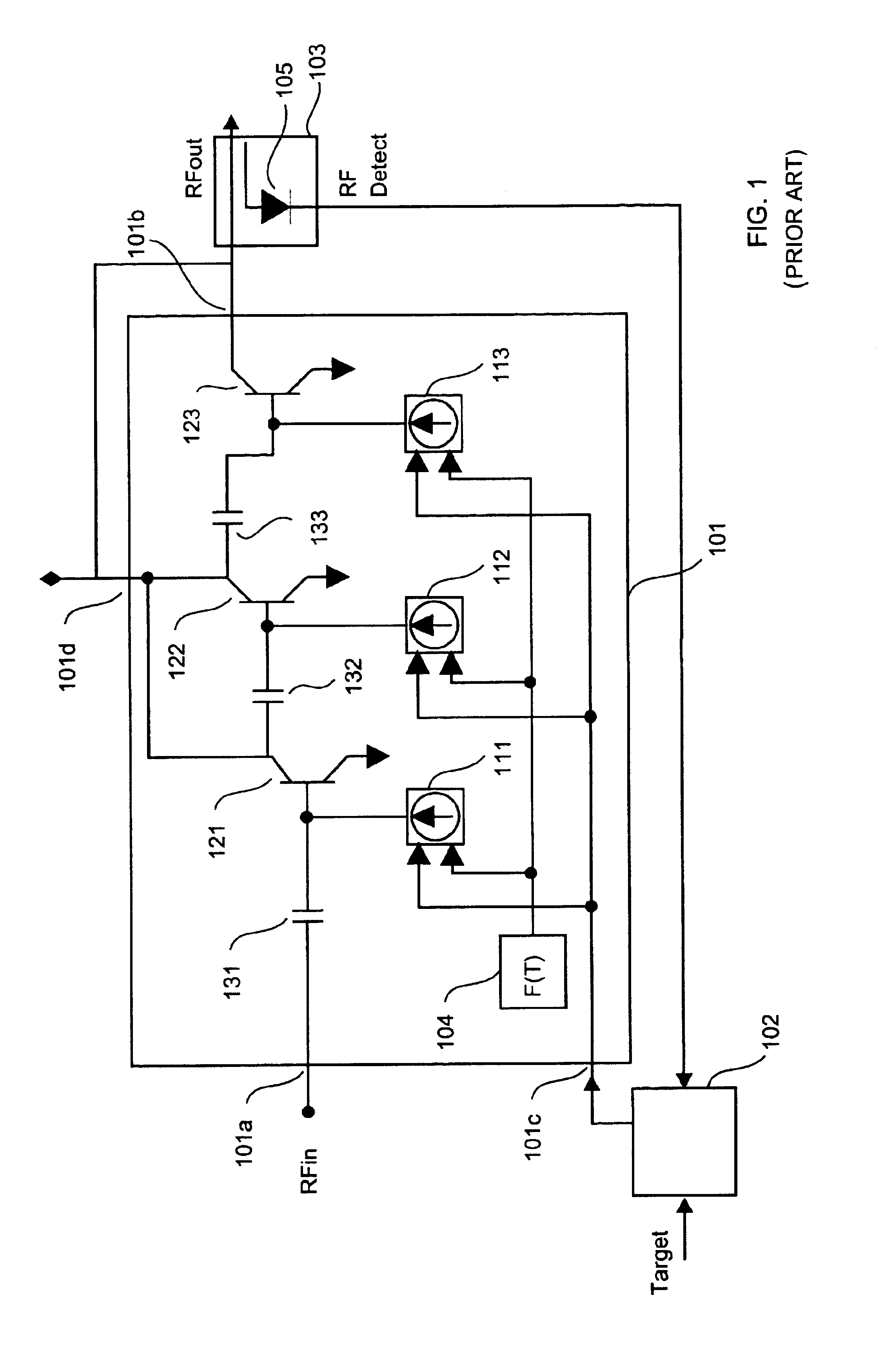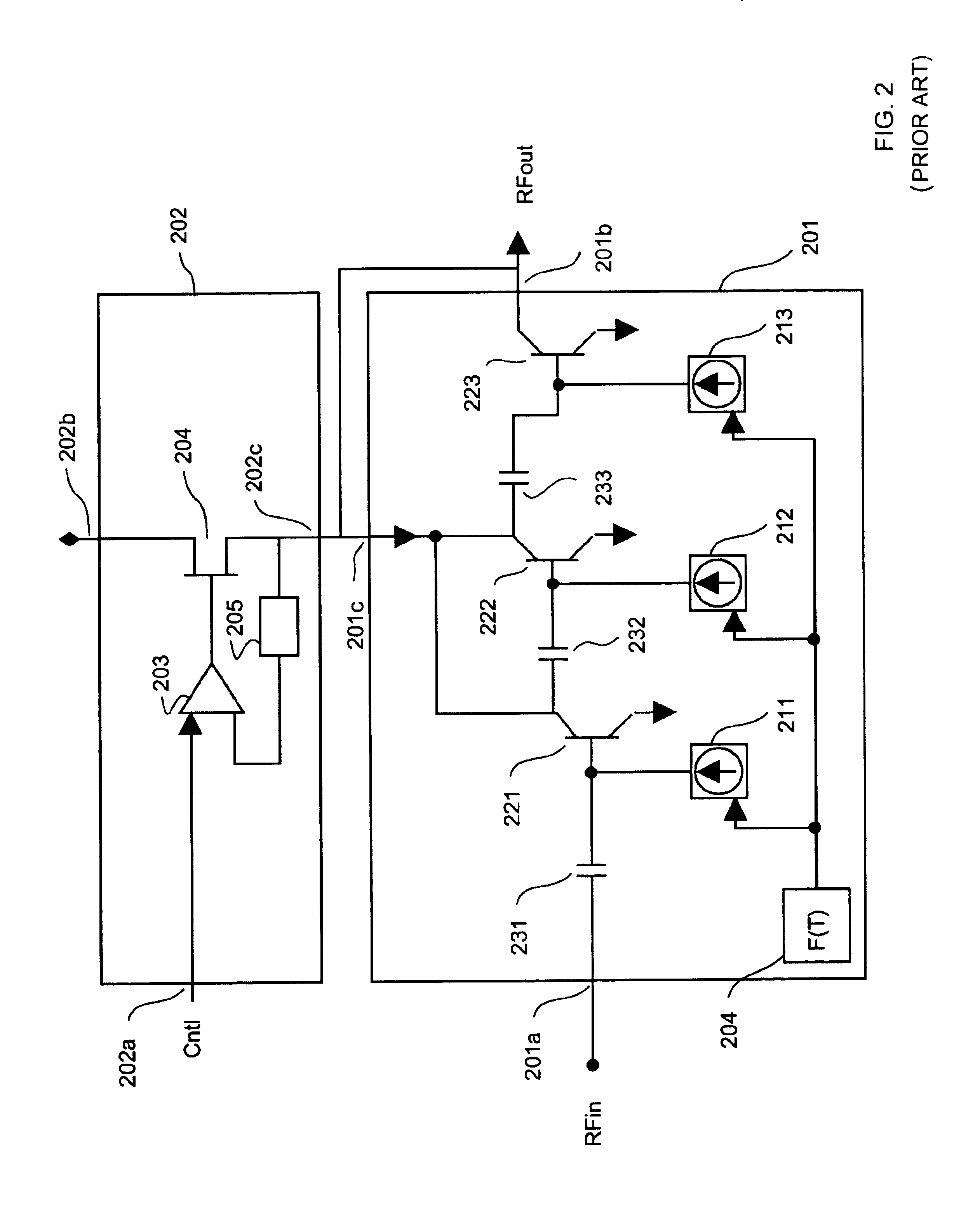Integrated power amplifier circuit
a power amplifier and integrated circuit technology, applied in the direction of amplifier combinations, automatic tone/bandwidth control, gain control, etc., can solve the problems of reduced operating efficiency, reduced concept, and use of multiple integrated circuit technologies with a net higher manufacturing cost and associated packaging area
- Summary
- Abstract
- Description
- Claims
- Application Information
AI Technical Summary
Benefits of technology
Problems solved by technology
Method used
Image
Examples
first embodiment
[0040]FIG. 4 illustrates a Dual Feedback-Low power regulation circuit for a three-stage power amplifier integrated circuit (PAIC) 401 in accordance with the invention. The PAIC 401 preferably has integrated therein a regulator circuit 405, in the form of a reduced die area regulator circuit, which is formed within the same die as the PAIC 401. The PAIC 401 is provided with an input port 401a for receiving a RF input signal, an output port 401b for providing a RF output signal, in the form of an amplified version of the RF input signal therefrom, a supply voltage input port 401d for receiving a supply voltage, and a control port 401c for receiving a control signal from an external source (not shown).
[0041]A voltage sensing circuit 406 is preferably disposed in series between the voltage input port 401d and the integrated regulator circuit 405, where the integrated regulator circuit is preferably in the form of an integrated compact low dropout (LDO) voltage regulator circuit. Prefera...
second embodiment
[0049]FIG. 5 illustrates a current source feedback circuit having low RF output signal power regulation for a three stage power amplifier integrated circuit (PAIC) 501 in accordance with the invention. The PAIC 501 preferably has integrated therein a regulator circuit 505, in the form of a reduced die area regulator circuit, which is formed within a same substrate as the PAIC 501. The PAIC 501 is provided with a PAIC input port 501a for receiving a RF input signal, a PAIC output port 501b for providing an amplified RF output signal therefrom, a voltage input port 501d for receiving a supply voltage, and a control port 501c for receiving a control signal from an external source (not shown).
[0050]A voltage sense circuit 506 is preferably integrated on the same die with the PAIC 501 and disposed in series between the supply voltage input port 501d and the integrated regulator circuit 505. The integrated regulator circuit 505 receives the supply voltage through the supply voltage input ...
third embodiment
[0070]The three current mirror circuits, utilizing sense transistors 661, 662, and 663, employ sense resistors 651, 652, 653 that differ by 3 decades in order to provide RF output signal power sensitivity over a broad dynamic range of operation of the three stage PAIC as shown in the The output signals from the three differential amplifier circuits 641, 642, 643 are advantageously summed together using the second summing circuit 609 for forming the feedback signal that is provided back to the third amplification stage 613 and optionally the first and second amplification stages. Of course, the integrated logarithmic detector circuit is not limited to 3 decades of operation by using three difference amplifiers and three current mirror circuits. Optionally, the integrated logarithmic detector circuit 610 is provided with a plurality of current mirror circuits in dependence upon performance requirements.
[0071]To compensate for RF output signal power variation due to changes in tempera...
PUM
 Login to View More
Login to View More Abstract
Description
Claims
Application Information
 Login to View More
Login to View More - R&D
- Intellectual Property
- Life Sciences
- Materials
- Tech Scout
- Unparalleled Data Quality
- Higher Quality Content
- 60% Fewer Hallucinations
Browse by: Latest US Patents, China's latest patents, Technical Efficacy Thesaurus, Application Domain, Technology Topic, Popular Technical Reports.
© 2025 PatSnap. All rights reserved.Legal|Privacy policy|Modern Slavery Act Transparency Statement|Sitemap|About US| Contact US: help@patsnap.com



